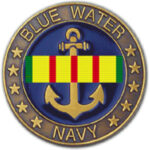CHAMPVA is a TRICARE like program that was authorized by the Veterans Health Care Expansion Act of 1973. The Civilian Health and Medical Program of Veterans Affairs became effective on September 1, of 1973. CHAMPVA covers veterans’ families who are not eligible for TRICARE and is for the spouses and children of veterans with total, permanent, service-connected disabilities, and for the surviving spouses and children of veterans who die as a result of service-connected disabilities. It is a service benefit program and there are no premiums (Fordney, 2006, p. 462).
CHAMPVA is very similar to the TRICARE program. The two programs are easily and often mistaken for each other. CHAMPVA is a Department of Veterans Affairs program whereas TRICARE is a regionally managed health care program for active duty and retired members of the uniformed services, their families, and survivors. It is important for individuals to understand the differences between CHAMPVA and TRICARE, as there are very distinct differences between the two (DeLorenzo, 2003, p.15).
The following individuals are eligible for CHAMPVA benefits as long as they do not qualify for TRICARE Standard benefits and are not eligible for Medicare Part A as a result of reaching age 65: The spouse or child of a veteran who has been rated 100% permanently and totally disabled for a service connected disability by a VA regional office, or the surviving spouse or child of a veteran who died from a VA-rated service connected disability, or who was at the time death rated 100% permanently and totally disabled, or the surviving spouse or child of a military member who died in the line of duty, not due to misconduct (Eligibility Requirements).
It is the Department of Public Affairs responsibility to determine who is eligible for the CHAMPVA program. The prospective beneficiary must go to the nearest VA medical center in order to determine whether or not they are eligible. Once an individual becomes eligible for CHAMPVA and their medical benefits are verified, the beneficiary is issued a VA identification card (Fordney, 2006, p. 462).
Generally, CHAMPVA covers most all healthcare services and supplies in that they are medically and psychologically necessary. Upon an individual’s confirmation of eligibility, they receive program material that specifically addresses all covered as well as all non-covered services and supplies. Benefit exclusions include the following: Care as part of a grant, study, or research program; Care considered experimental or investigational;Care for persons eligible for benefits under other government agency programs, except Medicaid and State Victims of Crime Compensation programs; Care for which the beneficiary is not obligated to pay, such as services obtained at a health fair; Care provided outside the scope of the provider’s license or certification; Custodial, domiciliary, or rest cures; Dental care except treatment related to certain covered medical conditions; Medications that do not require a prescription (insulin excluded); Personal comfort and convenience items; Services rendered by providers suspended or sanctioned by other Federal entities (DeLorenzo, 2003, p.15).
In order to enroll into the CHAMPVA program, dependents of veterans must have a social security number and their dependency on the veteran sponsor has to be established by the local VA regional office. After their dependency has been established, they then must obtain and complete an application, which can be done over the phone, by fax, or by downloading an application from the VA’s Web site (Fordney, 2006, p. 462). Beneficiaries are also issued an identification card that consists of the veteran’s VA file number with an alpha suffix. All dependents 10 years of age and older are required to have a uniformed services identification and privilege card (p. 463).
When an individual enrolled in CHAMPVA visits the medical office, the administrative medical assistant must check the individuals VA identification card. After the card is verified, the individual can then see the physician. When the MA bills for professional services, the VA Form 10-7959A is completed and submitted. Claims must be submitted within 1 year from the patient’s date of discharge from the inpatient facility or within 1 year from the date a service is provided (Fordney, p. 465). After the processing of the claim is completed, a payment check is generated and an explanation of benefits document is sent to the beneficiary. The explanation of benefits summarizes the action that has been taken on the claim and also contains additional important information (p. 268).
CHAMPVA offers an insurance program that is very beneficial to those who are not yet eligible for TRICARE. It also covers spouses and children of veterans with total, permanent, service-connected disabilities, as well as surviving spouses and children of veterans who die as a result of service-connected disabilities. Without CHAMPVA, many would be without insurance (Fordney, 2006, p. 462).
References
CHAMPVA Claim Form. Retrieved July 14, 2007. from: http://www.usa-federal-forms.com/usa-fedforms-dod-va/dod-va-10-7959a-nonfillable.pdf
CHAMP-VA Eligibility. (2003). Retrieved July 14, 2007, from: http://www.co.sherburne.mn.us/veterans/federal/CHAMPVAEligibility.htm
DeLorenzo, G. Guide to Veterans’ Medical Benefits. Retrieved July 14, 2007, from:
www.passagescenter.org/pdf/VeteransServicesGuide.pdf
Fordney, M. (2006). Insurance Handbook for the Medical Office. St. Louis: Elsevier Inc.
Fordney, M., Follis, J., & French, L. (2004). Administrative Medical Assisting. New York:
Delmar Learning.



